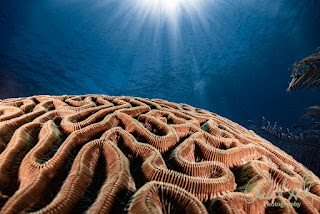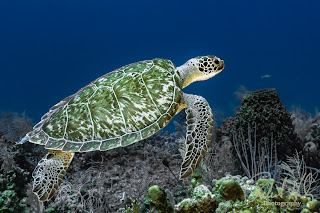Advanced Techniques for Processing Underwater Photos Using Adobe Lightroom in 2024
Welcome back to Robert Herb Photography's weekly Blog! Over a year ago, I posted an article titled "Some Basic Steps to Use for Processing Underwater Photos Using Lightroom." Since then, there have been major advancements in both Adobe Lightroom and camera technology. It's about time we revisited and expanded upon those basic steps, integrating the latest features and techniques to enhance the quality of your underwater photos.
Understanding the Basics
Recap of Basic Adjustments Before delving into the more advanced editing options, it's important to grasp and apply the basic adjustments. These fundamental adjustments, such as exposure, contrast, highlights, shadows, whites, and blacks, form the cornerstone of photo editing. Mastering these adjustments is crucial for producing high-quality final images.
Importance of Color Correction Underwater photography
often suffers from a blue/green cast due to the water filtering out other
colors. Correcting the white balance is essential to restore the natural colors
of your subjects.
Lens Corrections Lens distortions and vignetting are
common issues in underwater photography. Lightroom’s lens correction tools can
help remove these, ensuring your images are sharp and undistorted.
New Features in Adobe Lightroom (2024)
AI-Powered Enhancements One of the most exciting updates in Lightroom is the integration of AI-powered enhancements. These tools can automatically enhance detail, reduce noise, and improve overall image quality, saving you time and effort.
Advanced Color Grading The new color grading tools in
Lightroom offer more precise control over the colors in your photos. You can
now fine-tune the hues, saturation, and luminance with greater accuracy.
Masking and Selection Tools The improved masking and
selection tools make it easier to apply targeted adjustments. Whether you need
to brighten a specific area or adjust the colors in a particular section, these
tools give you the precision you need.
Camera Technology Advancements
High-Resolution Sensors Modern cameras come with
high-resolution sensors that capture incredible detail. This is both a benefit
and a challenge for underwater photography, as higher resolution means more
detail to work with but also more data to manage.
Improved Dynamic Range Newer sensors also offer
improved dynamic range, allowing you to capture more detail in both the
highlights and shadows. This is particularly useful underwater, where lighting
conditions can be harsh.
In-Camera Features Many modern cameras now include
features like focus stacking and in-camera stabilization, which can help you
achieve better results underwater. Make sure to explore and utilize these
features to enhance your photos.
Detailed Workflow for Processing Underwater Photos
Step-by-Step Guide
- Importing
and Organizing: Start by importing your photos into Lightroom and
organizing them into collections. This helps keep your workflow efficient
and your photos easy to find.
- Basic
Adjustments: Begin with the basic adjustments – exposure, contrast,
and white balance. These are the foundation of your edit and should be
done first.
- Color
Correction: Use the latest color grading tools to adjust the colors
accurately. Correct the blue/green cast common in underwater photos to
restore natural colors.
- Detail
Enhancement: Apply sharpening and noise reduction using Lightroom’s
AI-powered tools. This helps bring out the details without introducing
unwanted noise.
- Targeted
Adjustments: Use masks and brushes for specific corrections. For
example, brighten a particular area or enhance the colors in a specific
part of the photo.
- Final
Touches: Crop, straighten, and add any final enhancements to your
photo. This is the time to fine-tune your image and ensure it’s ready for
sharing or printing.
Before and After Examples In my upcoming online training class, I will illustrate the impact of
each step, I’ll share some before and after examples. These will show you how
each adjustment improves the overall quality of the image.
Common Challenges and Solutions
Dealing with Backscatter Backscatter is a common
issue in underwater photography caused by particles in the water reflecting
light back into the camera. Techniques like using a strobe light at an angle
and positioning it away from the camera can minimize this. Lightroom's spot removal
tool can help clean up any remaining spots.
Balancing Color and Contrast Achieving a natural look
without over-processing can be tricky. Use Lightroom’s tools to find a balance
that enhances the photo while keeping it realistic.
Preserving Details To preserve the intricate details during the editing process, it's important to use Lightroom's detail enhancement tools with care. This will help you retain the texture and sharpness of your photos, enhancing their overall quality and visual appeal.
Additional Tips and Tricks
Using Presets Creating and applying custom presets
can help achieve consistent results across multiple photos. Lightroom allows
you to save your adjustments as presets, which you can apply to other photos
with a single click.
Batch Processing For efficiency, use Lightroom’s
batch processing feature to apply adjustments to multiple photos
simultaneously. This is particularly useful when working with large sets of
photos.
Exporting Finally, when your photos are ready, use
the best practices for exporting them. Whether you’re exporting for web or
print, Lightroom provides options to ensure your photos look their best in any
format.
Conclusion
Staying updated with the latest post-processing techniques
is crucial for underwater photographers. With the advancements in Lightroom and
camera technology, you can achieve stunning results that were previously
unimaginable. I encourage you to experiment with these new features and share
your results.
Call to Action
Subscribe to my blog for more tips and tutorials on underwater photography. Don’t forget to share your processed photos on social media using the hashtag #RobertHerbPhotography. I look forward to reviewing your results.
New Online Training Program
I am excited to announce that I am creating an online
training program to teach underwater hobbyists and enthusiasts how to enhance
their photos using Adobe Lightroom. If you are interested in this training,
please contact me at bob@robertherb.com to express your interest and to be
notified about the details and start date of the classes.
References and Resources
- Adobe’s
Official Guides: Lightroom
Tutorials
- Previous
Blog Posts: Some
Basic Steps to Use for Processing Underwater Photos Using Lightroom
- Recommended
Gear: Cameras, lenses, and underwater housings that I recommend for
underwater photography.
Thank you for reading! If you have any questions or need further assistance, feel free to reach out in the comments or contact me directly.
Stay tuned and "Follow" for upcoming blogs on underwater photography tips and tricks for more in-depth insights. Please leave your comments and suggestions. Enjoy your diving and shooting experience!
I am eagerly anticipating your valuable feedback and suggestions.
Sincerely,
Bob Herb
|
|





Comments
Post a Comment
Please let me know your comments.